
|

|
|
|||||||
| Breed standard & bonitations How typical CzW should look like, measurements and commentaries to the breed standard, information about bonitations and youth presentations.... |
 |
|
|
Thread Tools | Display Modes |

|

|
|
|||||||
| Breed standard & bonitations How typical CzW should look like, measurements and commentaries to the breed standard, information about bonitations and youth presentations.... |
 |
|
|
Thread Tools | Display Modes |
|
|
#1 |
|
Junior Member
|
Ok so we all know that the Czech Wolfdogs standard states that the wolfdog should be "wolf sable" in my mind constitutes a dog this colour :
(I can't remember who owns this dog, its from this site, if you want me to remove it I will! Same for all the other photos) 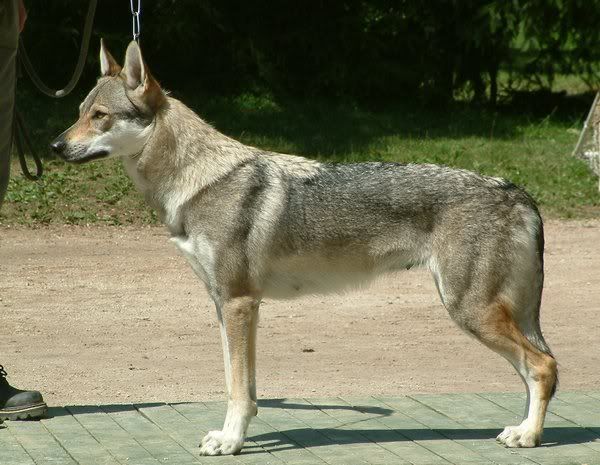 Light Grey with Dark Grey Shading, lightish tan on the face and legs, then lighter white paws, muzzle, belly etc : (Diagram yay!) 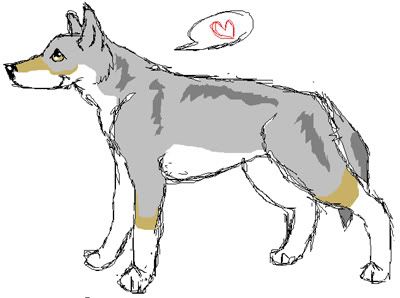 Excuse the badly drawn dog, I just really need to learn genetics ok so Wolf Sable, Greyish and Tan Ok this is taken from http://www.huskycolors.com/genetic.html ay Restricts dark pigment; makes sable or tan. Sable B Black. Must be present for black to appear anywhere on the dog. Black, Grey, Wolf Grey, Agouti, Sable, Isabella White ty Sable or dominant yellow. Epistatic to B-E when T is present which produces black. Sable, ? so anyone have any idea what the genetics would be for the STANDARD wolf grey/sable Czech Wolfdog. Ok next part is the dogs that are more Silver / Red these dogs must be affected by modifiers? so what would there genetics be? Is it dilution in silvers? Or just washed out bad colour? Silver:  Noting the lighter silver and the lack of tan 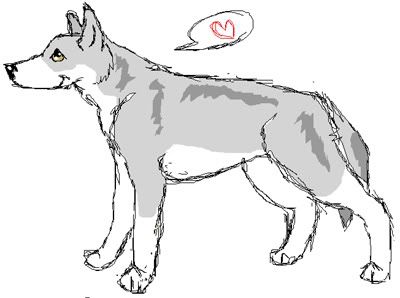 Red:  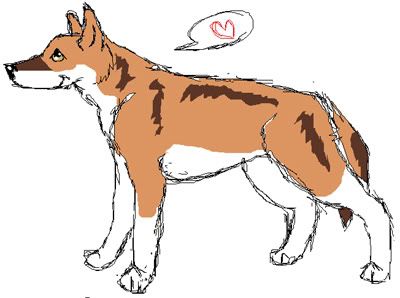 And how about the really darkish dogs: 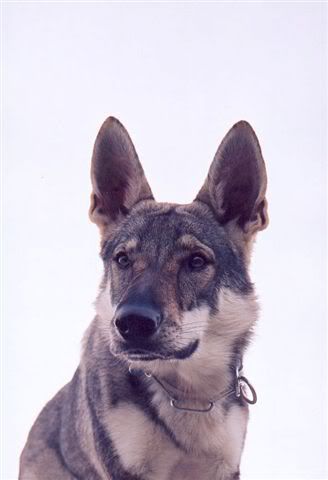  (believe it or not those colours were taken directly from the photo!) (believe it or not those colours were taken directly from the photo!)I also constructed a colour table too :  You can really see the differences in colours there |
|
|

|
|
|
#2 |
|
Junior Member
|
Oh my you really are getting into a very difficult topic here.
First of all a word of warning – be careful of the photos you chose to look at. While certainly there are wolfdogs which have a darker colour than average, I have no doubt that the last photo which you showed actually does not show the true colours of the dog (all that burned background makes me think of colour distortion and bad exposure and white balance) So first thing – don’t trust photos, particularly those on wolfdog, to give you the true colours of the Wolfdogs (I guess I’ve just made your quest a lot harder huh?) Ok starting from there – you also need to look at Wolfdog fur itself so as to understand better how it looks. Genetically you will have to distinct factors – 1) Factors which affect pigment production These will determine the colour of the fur of wolfdogs – For the CSV there are only two colours which I have ever seen – Tan and wolf-grey. All the shades of wolfdog can be explained simply by the combination of those two colours – which in molecular terms are likely to correspond to two separate dyes (in fact I am certain that the wolf-grey is actually melanin, not sure what causes the lovely tan colour though, probably a variant of melanin) 2) Factors which affect the distribution of the pigmentation. These are distinct factors which will determine where the fur will be coloured. The typical example in wolfdog is the black mask, or not – but there are many other areas of the wolfdog which have subtle changed in the pigmentation – notably the ears, the withers the underfur etc. Another thing which is interesting is that I have never ever seen a wolfdog with dyed underfur – it is always white or cream (ok to be honest often muddy – but that’s got nothing to do with the original colour of the fur!) Genetic factors which influence the actual distribution of pigmentation (the phenotype) are going to be rather harder to pin down because it is likely that a single factor may influence pigmentation in several areas of the wolfdog. The example which you cite for huskies is interesting and it gives you a starting point – however I am not certain which of the many factors cited are relevant to wolfdogs and which factors are present in wolfdogs and not in huskies (the two breeds are in fact quite different in pigmentation – despite the numerous times when people stop to ask if my CSV’s are huskies!) All that to say – interesting to study the genetics of wolfdog pigmentation but I must ask why? (guess I’m curious) I am also very troubled by some of the terms you use. I know that sable was cited in that husky site concerning some kind of yellow pigment, however normally sable is considered to be a black colour – very deep black colour in fact. Maybe I’m just showing my ignorance on the colouring nomenclature of dog coats, but I do find the way you use sable for everything to be very confusing. Right… did that make sense now? |
|
|

|
|
|
#3 |
|
Junior Member
|
Ok I just reread my post and I think I need to add some more ideas.
Technically you need to start by defining the phenotypes which you wish to look at – that is to say those characteristics which are discernable in wolfdogs and which you can judge in an objective fashion – for instance you will need criteria for defining various muzzle colourings if you are interested in this. (Easiest thing would be to use the bonitation codes in this particular case  Once you have defined the phenotypes which are interested in you can start to have fun by building up family trees of wolfdogs to see how the phenotypical characteristics which you have defined are inherited through the various generations. Unfortunately for you, you will not find many backcrosses amongst wolfdogs (backcrosses are the mating of a mother or father with their children – it makes for horribly inbred wolfdogs but can give a lot of information on the genetics of wolfdog traits) Once you have the trees setup you can start to wean little by little how those phenotypes which you can see behave genetically. That would be the time to postulate things about dominant, co-dominant, recessive and (possibly) lethal traits (I’d be surprised if you found many lethal traits in wolfdogs though!) as well as all the subtle shades which come with situations where a specific phenotype is actually influenced by a wide variety of genes (which – is of course the case with coat colour!) If you knew all this already – don’t worry. I like to talk and I suppose I particularly like to talk about genetics. Cheers, J. |
|
|

|
|
|
#4 | |
|
Junior Member
|
Quote:
The amount of people I see that breed merle to merle, then use the excuse "oh the bitch was a cryptic we couldnt see the merle". Not an excuse, I want to learn now so that I can gain as much knowledge as possible before getting a dog. Ive glanced through what you have said, its really interesting reading I'll read through it properly when I get home from college. (its 6:45 AM!) thanks a lot! |
|
|
|

|
|
|
#5 |
|
Senior Member
Join Date: Sep 2003
Location: Bad Dürkheim
Posts: 2,249
|
You could try to ask Prof. Helmut Wachtel of Vienna University who is a Biologist specialised on dog genetics. He knows wolfdogs (at least our dogs) and he took them as a example for agouti colour. He may be able to help you with your question. You will find him extremly interested in everything concerning dog´s genetics.
Anyway, the colour should be the absolutely last important thing to choose or breed a wolfdog for as long as you don´t talk about things like correct mask. Breeding for special colours is a sure thing to ruin a breed. Ina |
|
|

|
|
|
#6 |
|
Member
|
Hi,
I am not an expert in the field of dog coloring and it's genetics (far from it, actually), but there are some things I would like to point out to you anyway. I would also like to stress that I use the expression sable here not by my choice (as I also associate the word with black), but to stay with Mosi's nomenclature. 1) One part of the wolfish-grey colouring (that is the color type requested by the standard) is the way how the colors blend into one another. Any dog which got a mark Vyborny (Excellent) at dog-shows refereed by good judges (those trained by either slovak or czech clubs) has this typical way. It is best shown on your first photograph, Mosi, as the dog has the intermediate color. I think (but am not sure) it is the aguti type, which is a wild-type coloring in mammals and is dominant. and it is due to the distribution of pigments in the hair (light base with dark tip) and distribution of different hairs in the overall coat. 2) Second part is the colors of pigments present in the dog's hair and their relative amounts. Actually all first three photographs are a good example of this. The firts photograph shows and animal, which has cream, black and brown (or tan) pigments in it's hair. The tan pigments are mostly pronounced at places which you showed at the diagram plus ears. In the "silver sable" - to use your expression, the animal has brown pigments present at the same places, only they are lighter and not that pronounced. Those parts which look white on first picture are actually of cream color, and that is the color of undercoat and also basic color of hair of the pictured dog. In "silver sable" this basic color is white or almost white. Therefore the coat is actually composed of almost white hair with black tips, all above very light undercoat, which produces almost silver coloring. Now the third picture shows an animal with cream base but the brown/tan pigments are more pronounced and present on higher percentage of the dog's body. Actually I am not sure, if the cream and tan pigments are not one in fact, only present in different amounts. But the way it causes the coloring of hair makes these two types. 3) About the genetics of these traits. I have only one example, from my own litter of puppies, but it shows that this is not simple mendelian genetics. The mother of the litter (Baby Tribec CS) was more of the type "silver sable", but her coat changed in seasons, so sometimes she was almost intermediate (first photograph in Mosi's post). The father (Synek z Rosikova) could be characterized as intermediate. From 5 pupies which survived to the time when coat color could be assesed, one was of the "tan sable" (Anorien Potomok Vlkov), two of "silver sable" (Arwen and Ayrton Potomok Vlkov) and two intermediate (Aragorn and Arien Potomok vlkov). Here is the picture of three of the puppies at 5 weeks of age.
__________________
Saschia (Sasa Zahradnikova) http://www.chiens-loup-tchecoslovaqu...ei-et-damon.ws |
|
|

|
 |
|
|